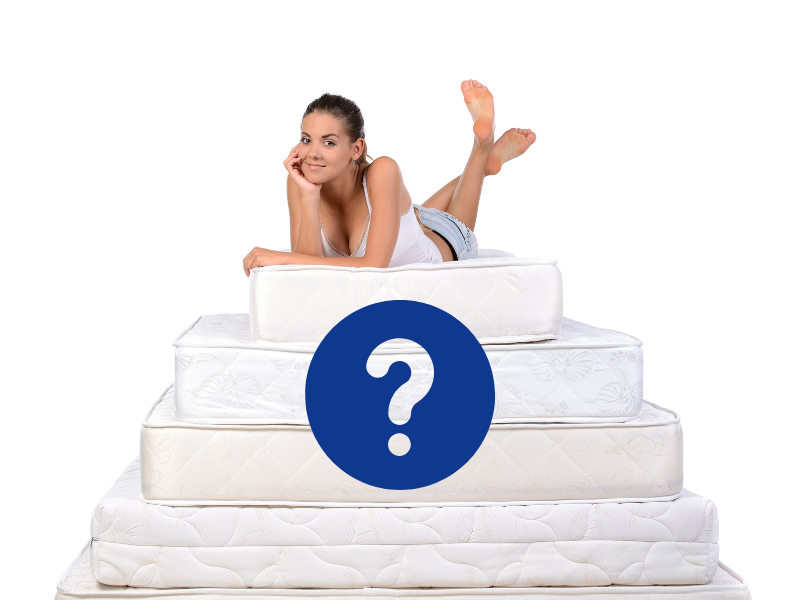There’s something magically serene about getting into bed after the bedding has been washed.
However, many people don’t think about how their mattress might also need to be cleaned.
Mattresses can harbour dirt, dust, mildew, and other irritants that can prevent you from experiencing a truly clean sleep.
So, in this step-by-step guide on how to keep your mattress clean, we’ll explore the most important aspects of washing your mattress!
Additionally, we’ll provide you with tips and tricks along the way for maintaining a clean mattress for the rest of its life.
If you’re ready to experience the most revitalising sleep of your life, continue reading for instructions on how to refresh your mattress with ease. Let’s begin!
Step 1: Prepare Your Mattress for Cleaning
Before the actual cleaning process can take place, it's important to prepare your mattress to be cleaned.
Although the guidelines in this article are broad, take a look at your mattress’s manual for cleaning instructions that are specific to its material.
Read the manual
The manual of your mattress contains essential information about the material your mattress is made out of, proper care instructions, and methods for cleaning the mattress.
Prior to gathering cleaning supplies, check that the ingredients are safe to use on your specific mattress! If you can’t find the physical mattress manual, you may be able to locate it online.
Remove bedding and wash
Once you’ve double-checked the manual, you can then remove the bedding from your mattress and wash it as you would normally.
Make sure to check the labels of your sheets and pillowcases to wash at the right temperature and setting. While the bedding is being washed, this is the perfect time to begin cleaning your mattress.
Vacuum the mattress
Vacuuming will remove the bigger dust, dirt, and other deposits on your mattress first, which will make subsequent cleaning steps easier to tackle.
For best results, vacuum slowly in one direction from top to bottom (or end to end). Make sure the vacuum is not on the highest setting, as pulling from the vacuum can damage the mattress material.
Step 2: Spot Clean Stains
Your next step is to look the mattress over and spot any stains that need addressing!
There are many different stain types, so we’re going to take a look at the four most common stains (as well as the best approach to removing them):
Sweat stains
Sweat stains are very likely to appear on mattresses, as sweating during sleep can be common (especially during summer months).
Sweat stains can appear like a dark, translucent mark, usually where the person sleeps.
The most effective method for clearing sweat stains from a mattress is to use hydrogen peroxide. Lightly spray the affected area and avoid oversaturating the stained area.
Once the hydrogen peroxide has sat for several minutes, wipe it away with a clean cloth.
Blood stains
Blood stains on a mattress respond well to cold water. Gently dab a cold washcloth or bundle of paper towels on the stain and allow the cold water to loosen it.
Once the stain has lifted as much as it can with just cold water, go in with a combination of baking soda and cold water – allowing the solution to sit for 30 minutes. Additionally, a pass with hydrogen peroxide can further remove the stain.
Urine
Urine is the cause of another common stain type that ends up on mattresses.
According to Sleep Republic, many report that using a white vinegar solution is effective along with a sprinkle of baking soda.
Once the powdered baking soda has absorbed the urine stain(s), vacuum it up and allow the mattress to dry!
Bodily fluids
Lastly, most other bodily fluids are simple to remove from a mattress. First, wipe down the stain with a solution of dishwashing detergent and hot water. Ensure that you don’t soak the mattress, as they are difficult to dry.
After wiping, allow the mattress to air out as it is important that the stained area dries completely to avoid mildew growth!
Step 3: Deodorise Your Mattress
There are countless odour elimination methods, from store-bought solutions to at-home remedies for bad smells.
One method of odour elimination is baking soda treatment. To try this method for your mattress, sprinkle a sizable amount of baking soda over your mattress – enough to cover the entire mattress in a thin layer.
This method is time-based, so leaving the baking soda for a longer period of time will absorb more odours and moisture. When you’re finished, vacuum the baking soda up from the mattress.
Step 4: Dry Your Mattress
This step is crucial for ensuring that mould and mildew do not grow on and around your mattress!
In order to effectively dry your mattress, you can either use a hair dryer on the entire area or sprinkle some baking soda to soak up the moisture.
Additionally, if you own a fan and can open some windows, that may be effective in drying the mattress as well.
Step 5: Special Considerations
Depending on the material of your mattress or other circumstances, there are special considerations that may need to be taken into account.
In particular, cleaning memory foam mattresses can involve different steps, as can addressing mattresses that contain bed bugs and dust mites.
Cleaning For Memory Foam, Latex, and Hybrid Mattresses
Memory foam, latex, and hybrid mattresses may require a different approach than traditional mattresses. As always, refer to the individual manual that is associated with your mattress!
If you’re looking to remove a stain, memory foam mattresses respond well to a mild detergent mixed with water. This approach also works well for latex mattresses, but these mattresses typically need to be aired out more regularly.
Addressing Bed Bugs and Dust Mites
Bed bugs are small insects that live in cushions, bedding, and other similar materials.
Bed bugs can be challenging to get rid of as they’re quite resilient. Similarly, dust mites are even tinier bugs that settle into dust particles.
if you notice that your sheets have brown or red spots from bug bites, blood, or if you have an itchy, red rash with many spots, you may have a bed bug or dust mite infestation.
To get rid of bed bugs or dust mites, strip your bedding and wash it at high temperatures (40°C or higher). Next, use a steamer to make the mattress environment inhospitable for the bugs.
Traditional methods like the above may not always be successful, so it is always advisable to call pest control and have them assess the situation to ensure that the infestation is properly managed!
How Often Should You Clean Your Mattress?
As a general rule, you should clean your mattress once every six months.
However, if you are more allergy-prone, you may want to consider cleaning it more frequently to get rid of dust.
At a minimum, vacuuming your mattress while your bedding is in the wash is a good idea.
Additionally, purchasing a mattress protector can alleviate some of the cleaning requirements for your mattress by protecting it from potential stains.
How To Prevent Future Stains and Odours
Now that you’re an expert on how to clean your mattress and remove stains, let’s discuss preventative maintenance!
If you adhere to the rules below, you might get to spend less time cleaning your mattress in the future:
Use a mattress protector or cover
Mattress protectors are hugely beneficial for mattress preservation. These pieces of cloth protect against stains, can be easily washed, and add a layer of comfort to your mattress.
Although fitted sheets can protect your mattress to some extent, mattress protectors are designed to be more durable and absorbent.
Wash bedding regularly
Clean bedding is another layer of mattress protection from dirt, dust, bed bugs, and other mattress-related concerns.
All bedding (including fitted sheets, top sheets, pillowcases, and more) should be cleaned once every two weeks. As soon as your sheets stop feeling fresh, it may be time for a wash!
Shower before bedtime
If you’re a morning shower person, hear us out: Our bodies collect dirt and grime all day long from travelling, working, eating, and more!
Although wearing clean pyjamas to bed is a great step, showering before bed is ideal for keeping your mattress and bedding clean for as long as possible.
So, to avoid completely changing your routine, you might want to quickly rinse before getting into bed.
Avoid eating or drinking in bed
Movie nights in bed with snacks and drinks are very fun, but they may cost your mattress its cleanliness.
If you can, avoid eating or drinking in bed (though this isn’t always possible). Instead, find alternatives like eat-in tables for lazy mornings or midnight snacking parties, and be conscious of your mess as you’re eating.
Keep pets off the mattress
While you’re cleaning your bedding or airing out your mattress, make sure your pets don’t jump on it!
Although we think of our pets as clean, they can contribute heavily to mattress dirt. If you’re able, close your bedroom door so that your pets don’t have access to your bare mattress.
Once your bedding is back, your mattress will be protected from any excess dirt or dust. However, it is recommended to avoid letting your pets be in your bed as they can contribute to allergens and a dirtier bed overall.
Ventilate and air out the mattress
Making sure your mattress is dry at all times is the best way to prevent damage!
If you can, open the windows in your bedroom to air out your mattress – especially if you have just removed some stains and are letting it dry.
Replace old or damaged bedding
Old, tattered bedding should be replaced every year or so, depending on how extensive the damage is.
Fresh and clean bedding can preserve your mattress for longer. Also, any tears in bedding can create friction-related damage to the material a mattress is made out of.
Clean and maintain the bedroom regularly
Beyond the bed itself, it is important to keep your bedroom as clean as possible!
To achieve this, vacuum regularly and wipe down surfaces. Additionally, it might be worthwhile to run an air purifier in the bedroom to prevent dirt from settling into your sheets or your mattress.
Mattresses tend to be like sponges, so if the surrounding area is dirty, the mattress will likely absorb some of the dirt as well.
Conclusion
You’re well on your way to having a pristine mattress!
Regular maintenance of your mattress will prevent any long-term damage from occurring. Always ensure that your mattress is clean and dry, and remember to wash your bedding twice a month.
Our Sleep.8 team wishes you the best night’s sleep!




